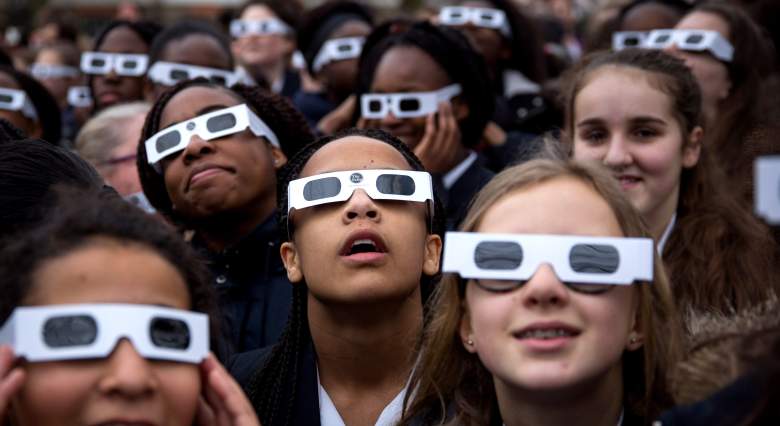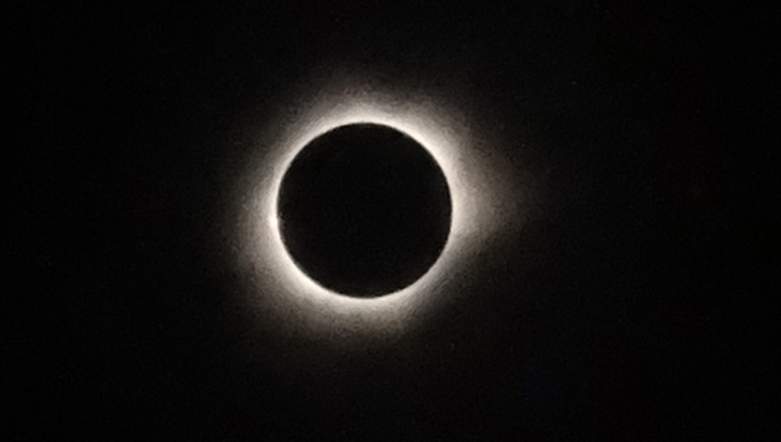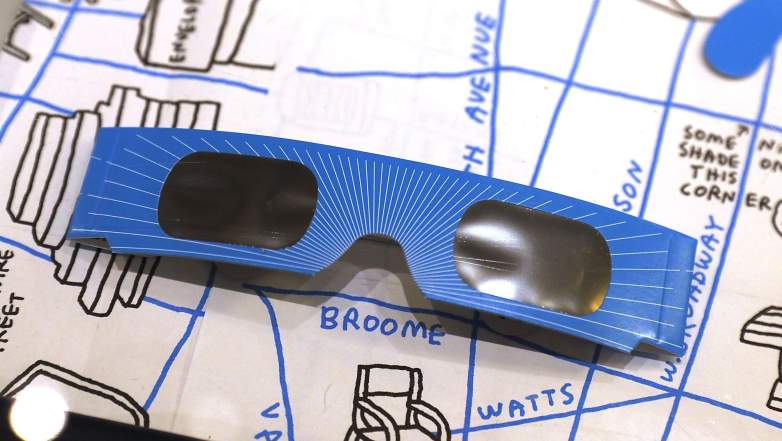
Getty
The solar eclipse of 2017 is almost upon us, and a lot of people waited to get solar eclipse glasses. Retailers that offered solar eclipse glasses are sold out all over the country, and it’s probably too late to get them delivered anyway (the eclipse arrives on August 21, 2017).
That has a lot of people turning to sites like Craiglist to find the glasses (and Facebook and eBay.)
Can you find solar eclipse glasses on Craigslist?
Yes, lots and lots of them, but, as with eBay, you have to be very careful that you’re buying certified glasses that aren’t fakes. We will give you information below that can help you do that, but be aware that some people are able to make fakes that use some of those markers. Your eyes are too precious too risk. If you can’t get solar eclipse glasses at a retailer, there are some other options.
First, some of those options, and then we will discuss Craigslist and fake spotting more.
First of all, you’re right to search for glasses; NASA says you can incur serious eye damage if you look at the solar eclipse without solar eclipse glasses. And, no, regular sunglasses won’t work. They can cause serious damage to the eye, even blindness, because they don’t provide the protection needed (it’s never a good idea to look directly at the sun, solar eclipse or not.)

GettyA total solar eclipse is pictured from the city of Ternate, in Indonesia’s Maluku Islands, on March 9, 2016.
There’s another alternative, though: There are many suggestions for making homemade solar eclipse viewers. Just make sure that you follow all of the safety precautions carefully. The eyes are a precious commodity. If you can’t get glasses, the Society suggests trying its pinhole projection method instead. You also might be lucky enough to be able to go to a NASA viewing area to get free glasses at a local library. Some universities and schools bought glasses in bulk and are holding viewing parties. USA Today offers detailed instructions for making a solar eclipse viewing card at home. National Geographic has detailed instructions for how to make a homemade viewer.
Here’s what you need to know:
Craigslist
First of all, here’s the link with a list of all Craigslist sites in America so you can see if there is one near you. If there is, click on that site, and type in “solar eclipse glasses” in the search box on the left. That’s what we did for Chicago. We found 169 entries. One person was even selling 20 of the glasses for $2,000, but you could also find the glasses for $10. In New York, we found 75 entries. And so forth. We checked some smaller cities. Milwaukee, Wisconsin? 16 entries. Salem, Oregon? 41 entries. And so on.
The bottom line. If you live near a community that’s on Craiglist, especially a populous one, but even a smaller one, it’s easy to find solar eclipse glasses on Craigslist. That’s because local buyers are offering them up for sale and will agree to hand them over in person, eliminating the problem that delivery won’t arrive in time for the eclipse.
5onYourSide, a television station in St. Louis, reported that solar eclipse glasses “are now hard to find at stores and sellers are hiking the price on the Internet. 5 On Your Side spotted one pair of glasses selling for $200 on Craigslist Friday. It’s been a quick way for some local people to make some extra cash this week.”
Amanda Davied and Ryan Frenette bought the glasses from major retailer and are selling them on eBay, Craigslist, and Facebook; they’ve made more than $5,000.

GettyA pair of free solar eclipse glasses sit on display at a Warby Parker store on August 11 in New York City.
In the State of Washington, a man offered to sell a free Cadillac “with purchase of eclipse glasses.” The catch? He’s selling them for $2,500. Here’s the ad. A quick search for “solar eclipse glasses” on the Craig’s List site for his area, though, shows a lot of glasses being offered for $20.
However, that’s just half of your problem. There’s another critical part of the journey: Whether they are safe.
You can start with getting recent glasses that were sold at a retailer on the American Astronomical Society list of reputable vendors (although be aware that people can fake such things.)
Writes NASA of the AAS list: “Refer to the American Astronomical Society (AAS) Reputable Vendors of Solar Filters & Viewers (link is external) page for a list of manufacturers and authorized dealers of eclipse glasses and handheld solar viewers verified to be compliant with the ISO 12312-2 international safety standard for such products.”
Why not just go straight to one of those retailers and skip Craigslist? You could try, but probably won’t have much luck at this stage. The American Astronomical Society does say on its website that most of the retailers on its list are sold out.
Retailers on the American Astronomical Society’s list of approved retailers are Love’s Travel Stops, 7-Eleven are “Bi-Mart, Casey’s General Store, Hobby Town, Kirklands, London Drugs [sold out], Lowe’s, Maverik, McDonald’s (Oregon only), Pilot/Flying J, Toys “R” Us [sold out], and Walmart.”
There have been problems with unsafe glasses flooding the market. The page also has a list of other online vendors you could try, but at this point getting the glasses shipped to you in time can be tricky. Some online vendors currently advertising overnight shipping report they are sold out of the product once you go to their websites.
As for eBay, or buying the glasses from someone selling them on Facebook or other social media sites, the same applies.
There are many people selling solar eclipse glasses on eBay, but costs are rising and you have to scrupulously watch out for fakes. Check it out. They range in price from under $1 to more than $200. Some offer “pick up now.” However, according to The Washington Post, “On eBay, solar glasses — which typically cost 99 cents to $30 — are selling for as much as $24,000 a pair, plus $38 for shipping. A spokesman for the site said employees have been ‘actively monitoring’ listings for unsafe items.” Unsafe glasses can “literally cook your eyes,” The Post reports.
The key to shopping for the glasses on such online sites, as mentioned, but it’s worth repeating, is that you need to make sure the glasses are certified, safe, and not fake. There are many glasses for sale on Craigslist in which the seller is advertising that they are certified.
Certification
Here is how to check if solar eclipse glasses are, in fact, certified. NASA refers people again to the American Astronomical Society, which has been working rigorously to help people spot uncertified fakes. The site recommends, “How do you know if your eclipse glasses or handheld solar viewers are truly safe? You need to know that they meet the ISO 12312-2 (sometimes written as ISO 12312-2:2015) international safety standard. Filters that are ISO 12312-2 compliant not only reduce visible sunlight to safe and comfortable levels but also block solar UV and IR radiation.” However, the issue is that some people copy the codes and fake it.
According to AAS, that’s why it developed the list of reputable vendors and retailers. “We’ve checked manufacturers’ ISO paperwork to make sure it’s complete and that it comes from a recognized, accredited testing facility, and we’ve personally examined manufacturers’ products. We’ve asked manufacturers to identify their authorized resellers, and we’ve asked dealers to identify the source of the products they’re selling. Only when everything checks out do we add a vendor to our listing,” the site explains. “If we don’t list a supplier, that doesn’t mean their products are unsafe — only that we have no knowledge of them or that we haven’t convinced ourselves they are safe.” (But, yes, that gets you back to the problem of so many glasses being sold out.)
There are some other clues as to whether the glasses are good, but you need to get them first to know. “How can you tell if your solar viewer is not safe? You shouldn’t be able to see anything through a safe solar filter except the Sun itself or something comparably bright, such as the Sun reflected in a mirror, a sunglint off shiny metal, the hot filament of an unfrosted incandescent light bulb, a bright halogen light bulb, a bright-white LED bulb (including the flashlight on your smartphone), a bare compact fluorescent (CFL) bulb, or an arc-welding torch. All such sources (except perhaps the welding torch) should appear quite dim through a solar viewer. If you can see shaded lamps or other common household light fixtures (not bare bulbs) of more ordinary brightness through your eclipse glasses or handheld viewer, and you’re not sure the product came from a reputable vendor, it’s no good,” AAS explains.
You can read more about AAS’ certification efforts and suggestions here.